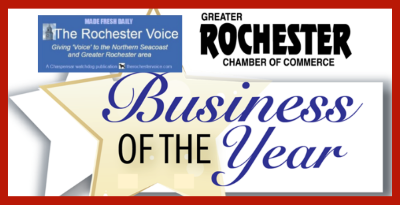
DOVER - The City of Dover is updating its Conservation and Open Space chapter of the Master Plan and seeks public feedback about the project's work through an interactive, online visual story map available at rebrand.ly/DoverStoryMap.
The story map provides an overview of the chapter's goals, defines the differences between conservation and open space lands, and utilizes geographic information system (GIS) mapping viewed through different lenses to tell a story about these lands in Dover. In addition to obtaining feedback, the story map seeks to inform the public about the chapter update that will help shape the city's land protection and resilience priorities for the next 10 years. The Planning Board adopted the current Conservation and Open Space chapter of the Master Plan in 2012.
The chapter update is also the topic of the city's July 16 Dover Download podcast, available at bit.ly/461POxJ, with Planning's Outreach Coordinator Erin Bassegio and Resilience Manager Jackson Kaspari.
"It's a great opportunity to learn about the project but also provide feedback where specifically residents might want conservation efforts focused in the future, as well as what types of conservation," Bassegio said about the story map during the podcast.
The Planning Board, which has the authority to adopt the chapter update, created a steering committee in January to guide the process. According to a press release sent out Monday, membership includes Deputy Mayor Dennis Shanahan as the City Council representative with Lindsey Williams as the Council's alternate, Mark Speidel representing the Planning Board, Russ Warnock representing the Conservation Commission and Forest Management Subcommittee, Kristen Murphy representing the Conservation Commission and Open Lands Committee, and Thomas Fargo, a former member and chair of the Conservation Commission. The City Council, through a competitive bid process, authorized contracting with the consulting firm Resilience Planning & Design, LLC to aid in the chapter update for $35,000.
Resilience Planning staff created the story map based on input from the steering committee, city staff, and the previous chapter update. It includes three conservation priorities identified by the committee: groundwater quality and quantity, hazard mitigation land, and important wildlife habitat, in that order. One story map survey question asks whether respondents agree on the priorities and ranking. Other questions seek the public input on what conserved or open space land needs increased accessibility, whether any of these lands need improvement, and what areas the public thinks should be conserved.
The GIS co-concurrence mapping utilized in the story map provides insight into past conservation measures and future opportunities. For example, one map highlights areas of the conservation values based on the three priorities. The next map shows what high conservation-valued land has already been developed. This information helps the city planners and land-use boards such as the Conservation Commission and Open Lands Committee prioritize expanding already conserved areas and pursue long-term connections between them, a goal stated in the Master Plan's Vision chapter updated last year.
The steering committee seeks to have a final draft of the chapter for the Planning Board's review and possible adoption this fall. Before adoption, the Planning Board will hold a public hearing on the chapter update.
For more information, contact the Planning Department at 603-516-6008.













